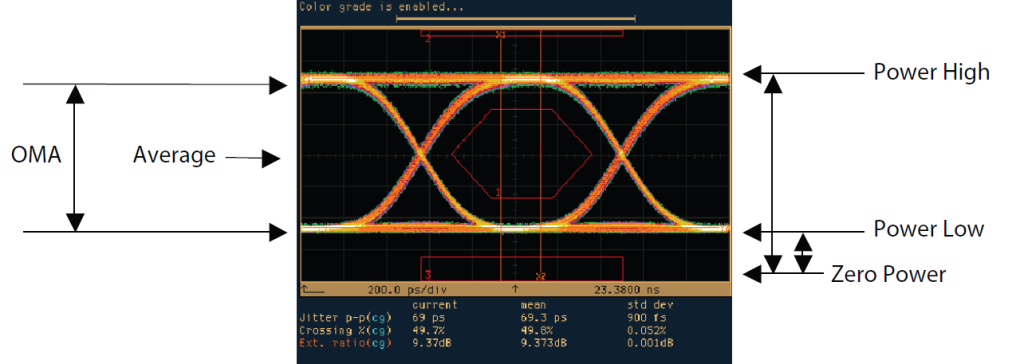Cisco Catalyst 3750 series switches are widely used in today’s access layer of the network, which can provide Ethernet speed of Gigabit. There are a variety of configurations in this series of Cisco switches. They can fit different applications and offering forward data rates from 32G to 128G by using Cisco StackWise technology. It is an economical solution to many midsize enterprises and office. However, to make full use of these switches, how to connect them to network becomes very important. This post will illustrate Cisco Catalyst 3750 series switches connection in details.
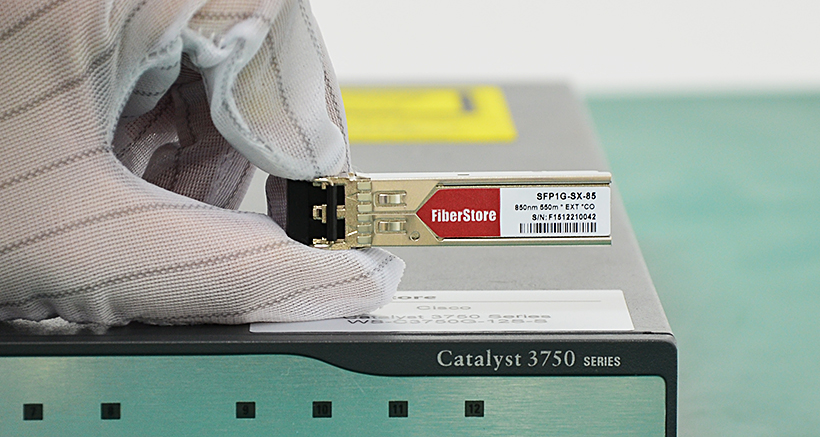
The ports on switches decide what types of connectors and cables can be connected with the switches. Thus, let’s get a close look at Cisco Catalyst 3750 switches ports details first. As mentioned, one of the biggest advantages is that Cisco Catalyst 3750 can support Cisco StackWise technology. Up to nice physical Catalyst 3750 switches can be interconnected into one logical switch with a high performance of 32G or 128G. This is largely depending on the StackWise ports on the rear panel of the switch as shown in the following picture.
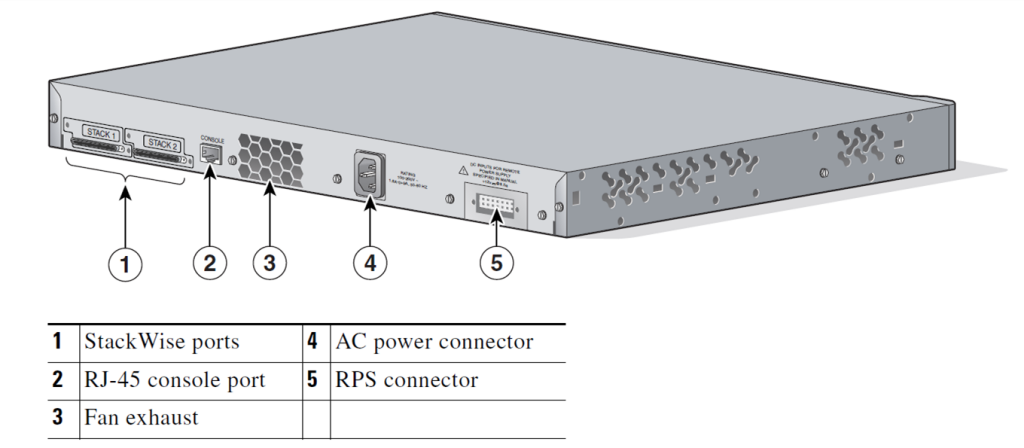
Another great advantage of Cisco Catalyst 3750 switch is its great flexibility and adaptability owning to its various configurations. The Ethernet ports of Cisco Catalyst 3750 can support data rage from 10M to 1G. For instance, or example, Cisco Catalyst 3750G-12S contains 12 SFP ports, Cisco Catalyst 3750G-24TS-1U has 24 Ethernet 10/100/1000 ports plus 4 SFP uplinks in 1 rack unit (RU) height, Cisco Catalyst 3750G-48PS is armed with 48 Ethernet 10/100/1000 ports with IEEE 802.3af PoE and 4 SFP uplinks. The following picture shows the detailed ports information of Cisco Catalyst 3750G-48TS, which has 48 Ethernet 10/100/1000 ports and 4 SFP uplinks.
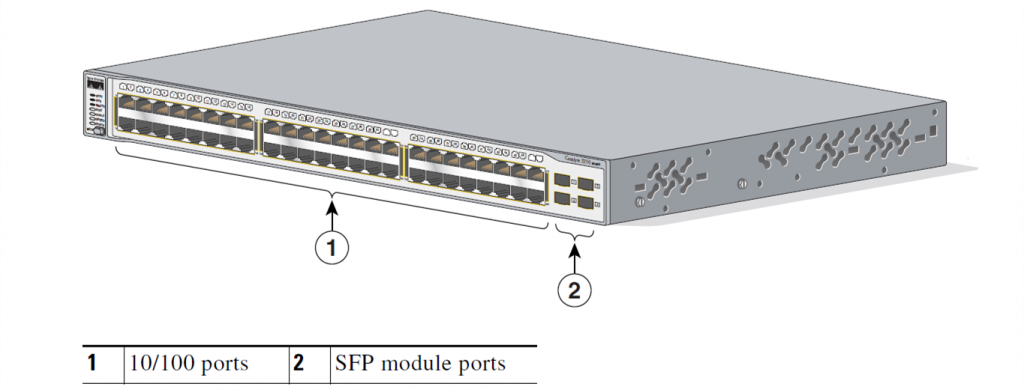
There are mainly two types of ports on Cisco Catalyst 3750 switches: RJ45 and SFP. Different cables and connectors are used to connect the switches to network. The following will offer detailed information about how to connect these ports.
Cisco Catalyst 3750 Switch 10/100/1000 Ports Connection
10/100/1000 Ports on Cisco Catalyst 3750 are RJ45 ports, which should be connected with copper cables (as shown in the following picture). For different applications, the cable types are also different. For example, when connecting Cisco Catalyst 3750 to workstation, servers, router, the straight-through cables are suggested to use with RJ45 connector. When it the switch is connected to repeaters, crossover cable is recommended. When connecting to 1000Base-T-compatible devices, be sure to use a twisted four-pair, Cat5 cable.
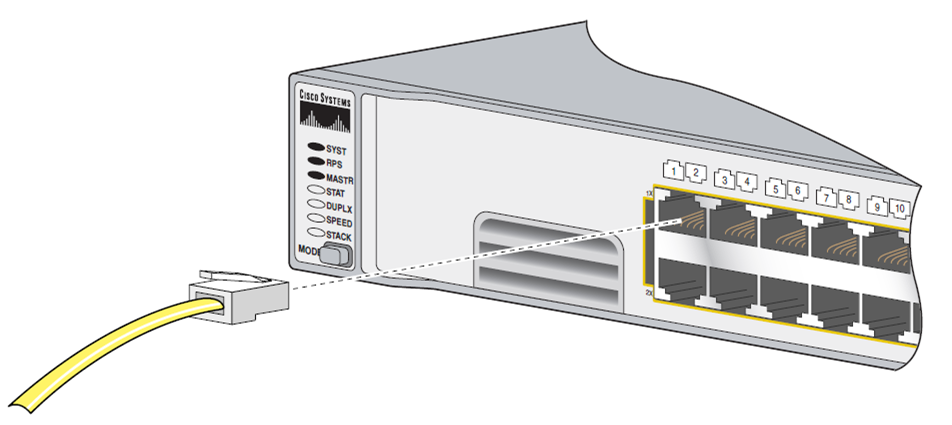
Cisco Catalyst 3750 Switch SFP Module Ports Connection
Most Cisco Catalyst 3750 switches have several SFP ports on their front panel. They can support Gigabit Ethernet, by using SFP modules related. Both copper and fiber optic links can be built with these ports and SFP modules. If connected with fiber optic 1000Base-LX or 1000Base-SX SFP modules a link supporting Gigabit Ethernet based on fiber optic can be built. If connected with copper SFP module like 1000Base-T, a copper link will be built. The following picture illustrates the connections with fiber optic SFP module port and Copper SFP module port from left to right separately.

More related cables and modules that Cisco Catalyst 3750 switches supporting are listed in the following chart for your reference.
|
Port Type
|
Data Rate
|
Connectors/Modules & Cables
|
|
| RJ45 Ports | 10BASE-T ports | RJ-45 connectors, two-pair Cat 3, 4, or 5 unshielded twisted-pair (UTP) | |
| 10BASE-T PoE ports | RJ-45 connectors, two-pair Cat 3, 4, or 5 UTP cabling power pins 1, 2 (negative) and 3, 6 (positive) | ||
| 100BASE-TX ports | RJ-45 connectors, two-pair Cat 5 UTP | ||
| 100BASE-TX PoE ports | RJ-45 connectors, two-pair Cat 5 UTP, power on pins 1, 2 (negative) and 3, 6 (positive) | ||
| SFP Ports | 100M | GLC-GE-100FX | LC duplex, MMF |
| GLC-FE-100FX | |||
| GLC-FE-100LX | LC duplex, SMF | ||
| GLC-FE-100BX-D | LC simplex, SMF | ||
| GLC-FE-100BX-U | |||
| 1G | GLC-SX-MM | LC duplex, MMF | |
| GLC-SX-MMD | |||
| SFP-GE-S | |||
| GLC-EX-SMD | LC duplex, SMF | ||
| GLC-LH-SM | |||
| GLC-ZX-SM | |||
| SFP-GE-Z | |||
| SFP-GE-L | |||
| CWDM SFP | |||
| DWDM SFP | |||
| GLC-BX-U | LC simplex, SMF | ||
| GLC-BX-D | |||
| GLC-T | RJ-45, Cat 5 | ||
All the above mentioned products are fully tested in FS.COM Test Center. Please contact sales@fs.com for more details.

